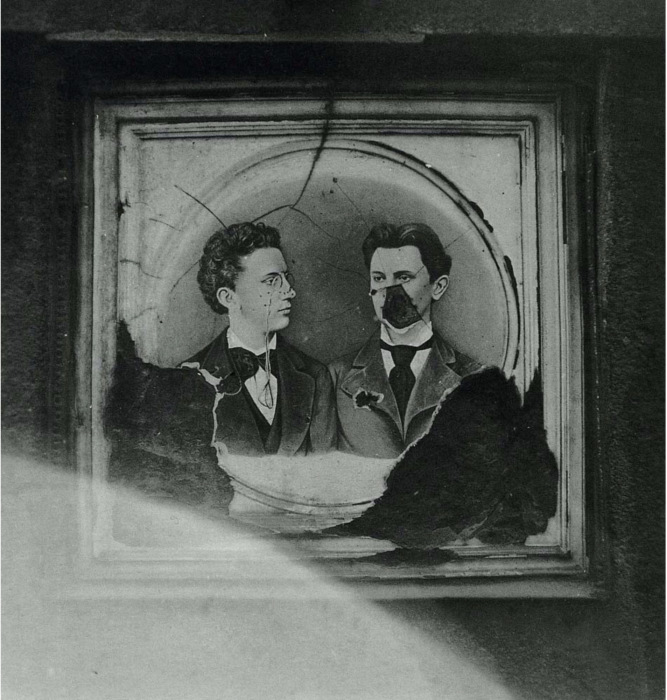Among the features that distinguish surrealism from any comparable intellectual and creative movement is its innate international dimension, in play from the moment of its formal inception in Paris on 15th October 1924, and surrealist groups emerging in cities across the world each had their own specific emphasis and character. This lecture takes as a case study the Czechoslovak surrealist group, formed in 1934 and still active to this day in Prague, through the lens of its distinctive tradition of surrealist documentary photography as a tool to reflect and critique its geographic and historical contexts. Driven underground by the Nazi occupation in March 1939, then again in 1948 under communist rule, Czechoslovak surrealism was effectively confined to a clandestine existence for two-thirds of its first 25 years, yet managed to develop a distinctive, critical language with which to understand and withstand these conditions. As a mobile, apparently dispassionate medium, documentary photography was uniquely placed to witness and express positions that, by the post-war era, diverged radically from the priorities of the group’s Parisian counterparts: rather than love, myth and the marvellous, Czechoslovak surrealist photography exposed everyday menace, the absurd, and the intersection of materiality and philosophy in a ‘concrete irrationality’ where the fabric and experience of the daily environment revealed its repressed truths.
The work of several key photographers can be explored so as to track a development that gradually led Czechoslovak surrealism down very different paths from those of most other international surrealist groups. Painter Jindřich Štyrský only prioritised photography for a few years in the mid-1930s, but used it to explore marginal or uncanny urban spaces, fairgrounds and unexpected, often forlorn objects in ways that drew upon the earlier practice of Eugène Atget but infused it with a prescient sense of foreboding. During the war, with possibilities severely limited, Miroslav Hák captured troubling happenstance in the urban environment evoking violence and loss, a theme revisited in the immediate post-war years by Vilém Reichmann, based in Brno, in sequences of images such as the ‘Wounded City’ cycle of ruined buildings, objects and spaces. The most sustained body of work comes from Emila Medková, stalking the streets of Prague to locate sinister urban structures, eroded surfaces or eloquent architectural details in which a spectral and absurd knowledge emerges against the efforts of political control. Among the recurring themes across these bodies of work, images of signs that break apart ideological languages and codes, and the collapse of structures into formlessness as a radical subjectivity floods into these gaps in signification, are two particular aspects signalling the eruption of a surrealist counter-meaning within the policing of the everyday.
A long-time specialist in the history, theory and practices of the international surrealist movement, Krzysztof Fijałkowski is Professor of Visual Culture and senior lecturer on the BA Fine Art programme, Norwich University of the Arts. Among his publications are Surrealism and Photography in Czechoslovakia: On the Needles of Days (with Michael Richardson and Ian Walker, 2013), Surrealism: Key Concepts, (joint editor, 2016) and The International Encyclopedia of Surrealism (co-editor 2019). Recent areas of particular interest have included surrealism’s relationships with photography, film and design, and its distinctive practices in Central and Eastern Europe. He has contributed catalogue essays for the V&A, Vitra Design Museum, Tate and the Centre Georges Pompidou, and recently joined advisory panels for the Metropolitan Museum / Tate Modern and the Museum of Contemporary Art, Belgrade. He is currently joint series editor of Bloomsbury’s Transnational Surrealism book series, and has worked on translations including André Breton’s Magic Art (Fulgur Press, 2024) and the Atelier André Breton online archive. With Dr Kristoffer Noheden, he is currently working on the project Documentary Surrealism, funded by the Swedish Research Council.
Organised by Professor Gavin Parkinson (Professor in European Modernism, The Courtauld) as part of the 2024-25 Frank Davis Memorial Lecture Series, ‘A Century of Surrealism: Resistance and the Image Since the Manifesto of Surrealism’.






